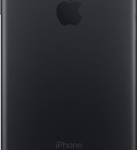There has been quite some discussion on the iPhone 7 recently and most of it has been focused on the absence of the headphone jack. It may have been a “courageous” move but not totally a convincing one. The floppy, white-only adapter can’t be stated to be an elegant solution for people already significantly invested in 3.5mm headphones. The bundled EarPods are going to be mediocre and buying in to Lightning connector solutions might not be economically or practically sensible. Wireless then is the answer and I too use the Sony SBH54 Bluetooth player for convenience when on the move. But it’s sound quality leaves much to be desired when compared to directly plugging in the headphone to the phone. Much more than that, the all-in-one Lightning port will be subjected to a higher degree of endurance now and hopefully Apple has strengthened it enough for the additional wear and tear. This may be a case of creating a problem when none existed, but only time will tell.
The other big talking point is the retention of the design philosophy for a 3rd straight year. It may depict a slowdown in technological progress or may simply be the result of a calculated business decision since after all, the iPhone 7 will still sell substantially for a fraction of R&D costs. But then, the former may still be true as is evident by Intel’s disruption of the tick-tock cadence and “violation” of Moore’s Law. Whatever be the reason for the piffling update, much of the chagrin is directed at the lack of differentiation as the Chinese OEMs have done more than a reasonable job of imitation at a fraction of the cost.
The fact is that Apple doesn’t seem to be top of the pile anymore when you consider the design of the Apple Watch or the hunchback battery pack. In fact, the phone itself seems to have been commoditized to a great extent, at least from the hardware perspective. We have reached a point of diminishing returns akin to the PC industry where the next incremental update doesn’t seem to be worth the additional premium. I would assume that budget conscious users, especially in India, would opt for the 6s or even the 6 over 7.
While we are obsessed with the latest and greatest specifications but a lot of the appeal for the iPhone is in its software, especially when you compare it to the Android OEMs who seem to be stuck in a time warp. There was a considerable period of time when phones were not about the OS. The fact is that money was and is still made from hardware sales and the software was simply a facilitator in that regard. There was simply no means of receiving updates and almost everyone was happy for it. Smartphones have ushered in a new age of expectations, but old habits die hard for the Android OEMs. Having used Android for about 6 years now, the fact is that you would be extremely lucky if your phone ever saw past 2 updates. Nexus is supposed to be the leader here but even it doesn’t guarantee OS updates beyond 18 months. Most people are oblivious to the security repercussions arising out of the frailties of the modern OS and realize it all too late. But then again, apart from Samsung, no other Android OEM is equipped to take Apple head on in this regard. Even if you look past TouchWiz, Samsung doesn’t exactly have a great track record of promptly updating the OS and I realized it the hard way with my SIII. Apple’s iOS support of 4-5 years seems very generous in that regard.
Another argument in favour of Android is that it does all that an iPhone does at a fraction of the cost. To argue against people possessed of such a mentality can be futile for it is certainly true at a basic sense. If you are looking for bang for the buck, the iPhone is never going to give you that. However, for one who cares about the quality, experience and consistency, the premium of price is easily offset. My experience with iOS was limited to the iPad 3 and I must admit that I really hated the so-called “walled garden”. However, after being continually subjected to rogue apps, battery drains, runaway permissions and random reboots, I have come to appreciate the need for robustness and the value of time. Android is caught between a rock and a hard place. The OEM can’t be bothered to update or even worse, release an incompetent update that causes the phone to limp around. Some would call it planned obsolescence but in case of Android OEMs I am inclined to think that it is an unplanned one. On the other hand, custom ROMs afford the luxury of experiencing the latest and greatest at the cost of significant bugs that bite you when you need the phone the most. The fact is that there is no easy way out. As I say it, I understand that most people can’t be bothered about updates and to them I say touché.
The argument that I put forth in this lengthy narrative is that most people don’t see the value of the OS in making a phone purchase. Apple has a gem in this regard with the iOS that inspite of its occasional pitfalls, generates a wonderful synergy with the hardware. Consistency in design and efficiency can only be appreciated by those who yearn it the most. As much as developers are at the forefront of innovation, a fence and a guided path are sometimes essential in ensuring a memorable journey to the destination. Frankly, Android seems to be veering all over the place in this regard and the situation is significantly worse than what it ever was with Windows. Google has been changing course to bring in a greater level of control and standardization but that ship seems to have long left the shore. It may continue to rule the world but it shall never be the king.



